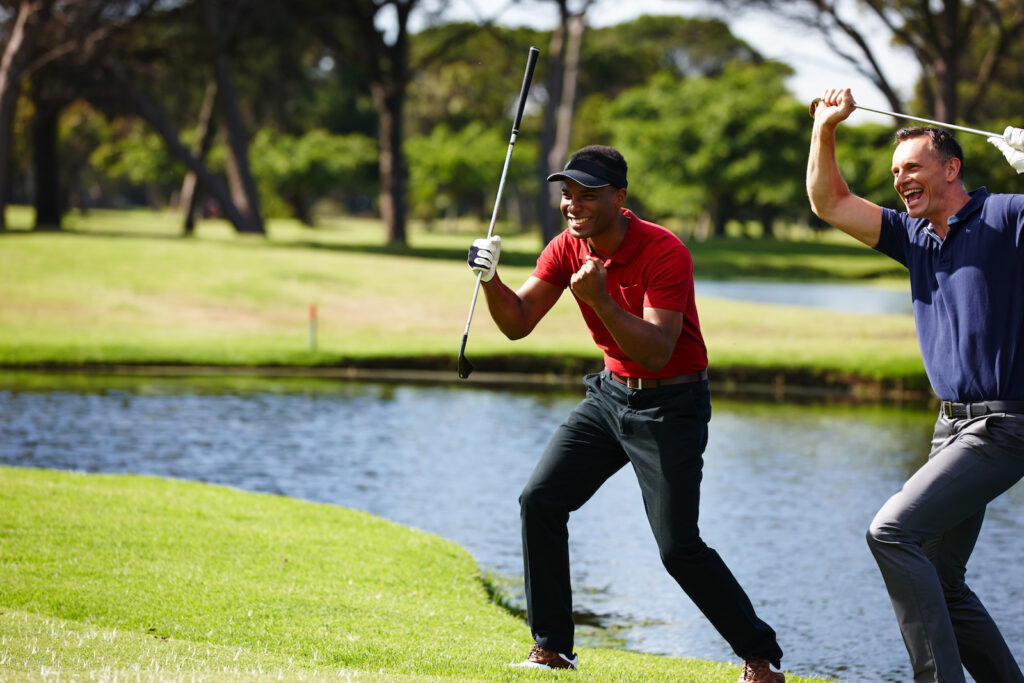A Must-Read for Hank Haney’s Essential Slice Fix
Posted by
Discover the revolutionary technique from the game-changing coach himself, Hank Haney. Let’s break down his simple, effective method to fix your slice once and for all.

Slicing is a common problem that affects a considerable portion of golfers, from amateurs to seasoned pros. This irregular golf shot, where the golf ball veers off to the right in a distinctive curving path, plagues an estimated 90% of golfers. The root of this problem lies at the point of contact where the golf club hits the ball. If at this point, the clubface remains open rather than square, it results in the sliced trajectory. This seems like a small irregularity, but in the exacting world of golf, where precision is integral, it can hugely impact a golfer’s performance.
Harnessing Haney’s Techniques
To help golfers combat the frustrating slice, many tips and techniques have been developed by experts over time. But few have been as potent and effective as the method developed by famed golf coach Hank Haney. Parallelly, renowned golf teachers like Pete Cowan have also emphasized similar techniques. Using these methods to fine-tune your golf swing can not only tame the slice but also improve your overall game significantly.
The fundamentals of Haney’s method focus on the mechanics of the golfer’s body movement during the swing. This involves understanding and feeling the dynamic rotation of shoulders and arms as they manoeuvre the swing while ensuring the clubface closes as it progresses through the golf swing.
Understanding the Participation of Your Body and Mechanics of the Swing
In Haney’s method, there lies a symmetry that matches the natural motion of human body – rotating clockwise, akin to a winding spiral staircase, facilitating smoother rotation and optimum utilisation of the entire body’s mechanics. This helps achieve a more rounded, controlled, and balanced swing.
While taking a swing, the process begins with the rotation of the body, working in unison with the upward movement of the arms, or as Haney explains, “the loading of the arms”. This combined action helps achieve the right position at the top of the swing. On the downswing, the process reverses. The arms initiate the movement downwards, followed by the body rotation lining up to hit the ball. And this entire sequence of movements is completed with a further rotation and lifting of the arms on the follow-through, ensuring a complete swing.
Mastering the Swing Motion
Adapting to these sequences in stages will build a sound foundation to your golf swing. Haney insists on a powerful clubface position while adopting a clockwise motion during practice landings. This methodology ensures that golfers, especially those prone to slicing, can break away from their standard counter-clockive or ‘over-the-top’ habit. Here is the simplified process you can follow along.
- Clockwise Motion: The first step is to imbibe the clockwise motion of the club during practice swings. This will feel different initially, especially if you’re used to the counter-clockwise swing.
- Shoulder Turn: As the club goes over your head, make a point to rotate your shoulders, letting your back face the target. This aids in achieving the correct orientation for your backswing, setting you up perfectly for the next phase.
- Hand Position: Once your hands reach the 3 o’clock position, it’s crucial to flip them to initiate the downswing and to ensure proper alignment with the oncoming golf ball.
- Strong Grip: Among the various grip styles available, Haney advises going for a stronger grip. This involves turning your hands to the right, allowing at least three of your left hand’s knuckles to be visible. Also, adopting a softer grip pressure helps in a timely release of the club, critical to avoid slicing.
- Gradual Transition: All these practice motions – from starting with the club up, turning, and swinging to 3 o’clock – will gradually lead to a natural golf swing, that sends the ball curving from right to left. Achieving this is akin to walking away from the problem of slicing and stepping into a realm of controlled, precise golf shots.
Avoiding Common Faults and Adopting Effective Techniques
A common mistake Haney points out falls in the swing’s transition phase. Golfers often rotate their bodies largely, lift their arms and then transition into a further body rotation. This excess rotation results in the club being trapped on the outside, creating an out to in swing path – the primary culprit resulting in a slice.
The correction for this lies in a simple adjustment to their sequence – the arms need to work upwards while the body rotates and, similar to the backswing, the arms should initiate downwards as the body continues to rotate in the downswing. This simple shift in sequence can eliminate the root cause of the slice. However, to truly master Hank Haney’s method, one needs time, patience, and a lot of practice.
Wrap up
In conclusion, mastering the powerful slice fix technique of Hank Haney might require patience and time as changing your golf swing might result in some unpredictable shots initially. Yet, as you incorporate this technique into your practice and then into your game, you will be rewarded with a more controlled swing, an improved ball flight, and an impressive scorecard. The journey might be challenging, but perseverance will inevitably lead you to precision – the holy grail of golf. So, practice diligently, trust the process, and as you watch that slice vanish, you will know your effort has paid off.
